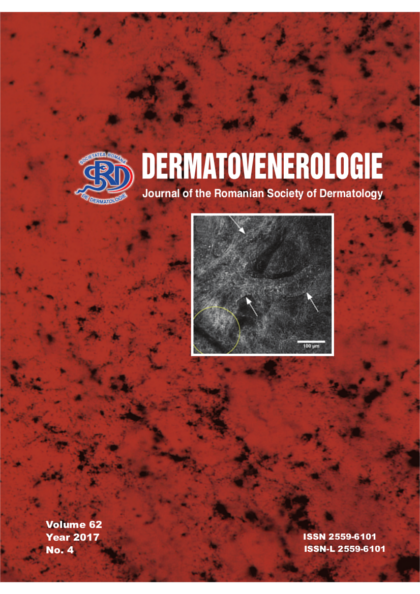Clinical cases
RECONSTRUCTION METHODS OF A DEFECT POSTEXCISION OF A BASAL CELL CARCINOMA ON THE FACE
Basal cell carcinoma is a malignant
skin tumor with a slow growth and a progressive evolution
in time. This type of skin cancer has a local aggressive
evolution, but it rarely metastasizes.
Case report: We present the case of a 68 year old
female with a nodular erythematous structure, with
peripheral basal pearls, central telangiectasias, partially
pigmented, asymptomatic, with a 1,2 cm diameter.
The tumor was situated in the medial canthus of the
nose and had an evolution of approximately 5 years.
We excised the tumor under local anesthesia and we
repaired the defect with a rotation flap. The tumor was sent for
the histopathological exam, which confirmed the diagnosis of
nodular pigmented basal cell carcinoma with negative
resection margins. The post surgery evolution was favorable.
Discussions: Repairing post surgery defects resulted
after excising different face skin cancers can be realized
through multiple methods, considering the size and the
location of the tumors. Local flaps are frequently used in
face defects reconstruction because their size and location
do not permit primary wound closure.
In this article, we will discuss some reconstruction
methods which can be used in our patient’s case.
Conclusion: Surgical excision remains the best
treatment for skin cancers. The purpose of reconstruction is
to restore the normal aspect and the functionality of the area
with optimal aesthetic benefits


